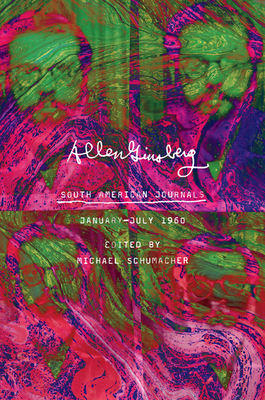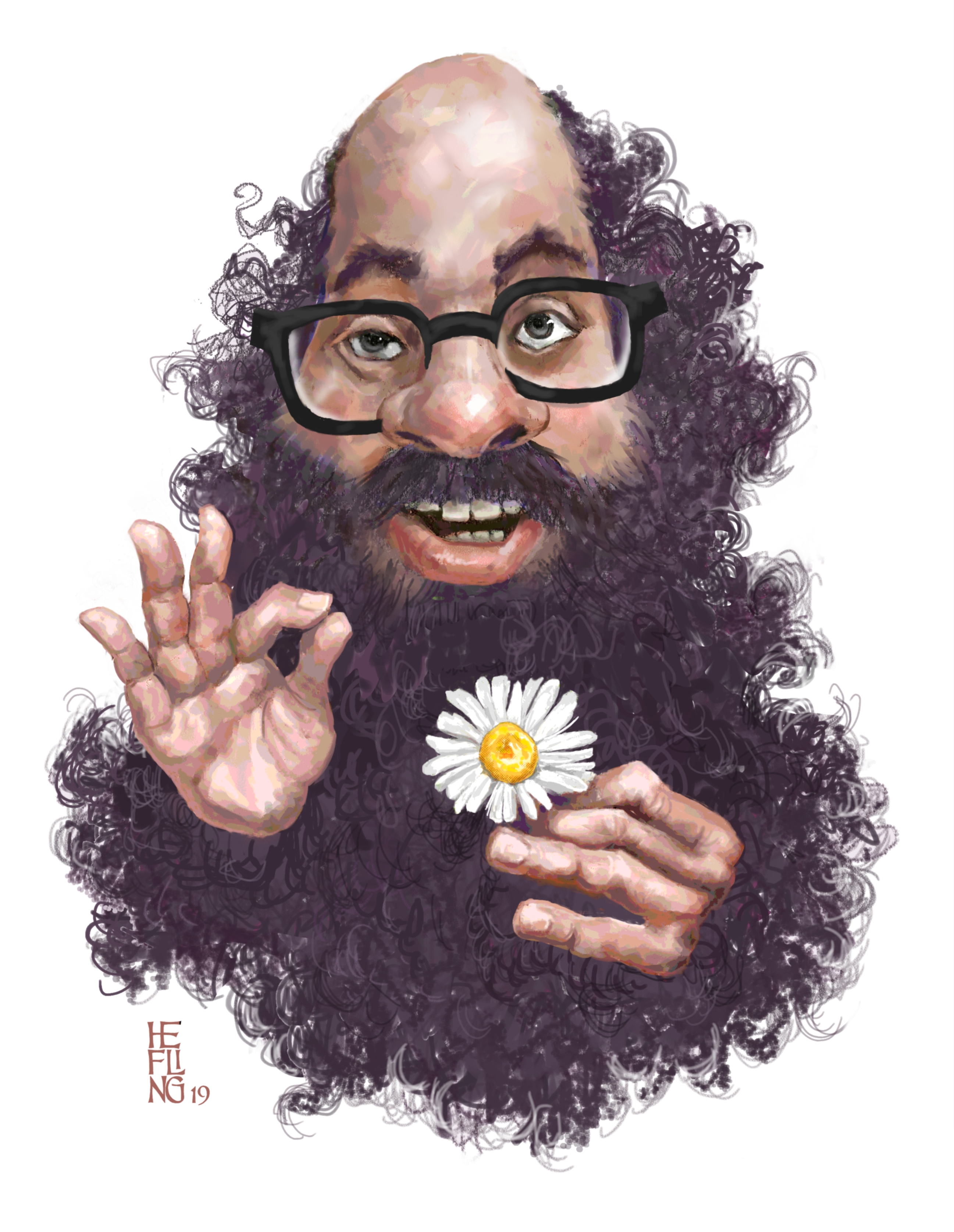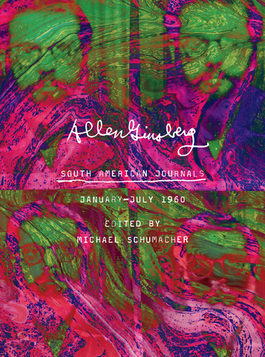 South American Journals: January–July 1960
South American Journals: January–July 1960
by Allen Ginsberg
Edited by Michael Schumacher
University of Minnesota Press
352 pages, $29.95
WRITERS of the Beat Generation—that “pack of oddballs who celebrate booze, dope, sex, and despair,” Time magazine once quipped—drew freely upon their own lives as they wrote their novels and poetry. Keeping journals was an important literary aide-memoire for many of them. Of all the Beats, Allen Ginsberg was undoubtedly the most prolific notebook keeper. Ever since William Carlos Williams turned him on to carrying around a notebook to jot down “whatever I heard and saw,” Ginsberg always had a journal of some kind close at hand.
The journals that he kept for the six months when he roamed South America, from January to July 1960, are a case in point. Ginsberg had already been to Latin America—to Cuba and the Yucatán—back in the early 1950s, where “like Shelley in Italy,” he once told Jane Kramer, he “was busy poking around … absorbing that kind of antiquity and sense of transience and thinking up big long poems.” His second Latin American trip, which was occasioned by a poetry conference in Chile, continued that tradition.
Ginsberg also documented his anxieties: worries that “when Death comes, I shall be loveless & alone with no progeny,” and that he was “missing out on the great psychic mystery.” Because he was not able to travel with his lover Peter Orlovsky, he often suffered from “enormous loneliness” and “lack of connection.” He felt that he was getting old and undesirable. (Although he was only 33, he saw himself, like Dante, as “halfway thru my life.”) His awareness of time—its passing, its ravages, its path toward Death—plays a large part in these journals: “even if I escape it by poetry queer vanity sex assfucking riding around the world being Loverboy of Boys … sooner or later this lonely farce [will]be extinguished.”
These journals include many references to his erotic life. At Huyna Picchu in the Peruvian Andes, he masturbates “till I came staring with half-closed lids over the smoky peaks.” He gets drunk with “a bunch of creepy boy whores” and loses his money. And he’s always on the lookout “for eyes like mine … and that secret liberty that comes to two men fucking in a bed anonymous and new.” For this self-described “sex fiend of the Infinite,” sex was a kind of yogic practice, a vehicle that allowed his mind “entrance into god.” For Ginsberg there was “a transcendent joy at cock and balls in tenderness.” He celebrated his “Godly asshole” and experienced “all parts of the body” as God.
 Ginsberg noted both the beauty and the squalor that he encountered in Latin America, from the “two huge, extra-turkey size brown condors” he saw at Machu Picchu to “The Mountain of Garbage … a mile wide and ten stories high [where]all the leftovers & filth & throwaway shit of Lima for a generation [is]piled up.” There was something wrong with an economic system that led to this, he thought. “I am living on the blood/ of other human beings.” And, as befits the author of Howl, his powerful cri de coeur against the horrors of his age, Ginsberg continued to rail against the times. “All is vanity … Communists are wrong, Capitalists are wrong.” As were, too, the bureaucrats who had “triumphed in Seizing control of all roads of communication with the Divine.”
Ginsberg noted both the beauty and the squalor that he encountered in Latin America, from the “two huge, extra-turkey size brown condors” he saw at Machu Picchu to “The Mountain of Garbage … a mile wide and ten stories high [where]all the leftovers & filth & throwaway shit of Lima for a generation [is]piled up.” There was something wrong with an economic system that led to this, he thought. “I am living on the blood/ of other human beings.” And, as befits the author of Howl, his powerful cri de coeur against the horrors of his age, Ginsberg continued to rail against the times. “All is vanity … Communists are wrong, Capitalists are wrong.” As were, too, the bureaucrats who had “triumphed in Seizing control of all roads of communication with the Divine.”
While some of the journal entries read like stream-of-consciousness gibberish, there are moments of radiant, robust poetry reminiscent of Walt Whitman and the mystical, prophetic rapture of William Blake. Ecstasy and fear of madness are themes Ginsberg sounds again and again in these pages. He was painfully aware of madness—the mental illness in his family, the madness of the times, the madness at the heart of the Universe. Occasionally, too, he worried that he was “scribbling Nothings./ Page upon Page of Profound(est)/ nothing.” But he is quick to remind himself that he had taken on “God’s work in poetry.”
For Ginsberg, who described himself as “the braggart & loudmouth beast of God,” the divine was his “one deepest lover.” He thought of himself as a bodhisattva, for whom the suffering of all sentient beings must be relieved and redeemed. At the same time, the death of consciousness was something that terrified him. It was, he wrote, something “I’m unwilling to face.”
As with sex, Ginsberg took drugs as a way to expand his consciousness. In Peru he had access to ayahuasca, a native herbal brew that he took under the guidance of a curandero or witch doctor. By taking it, he hoped to learn “if there were some answer, some way out of Fate, some entrance to Perfection which would include both Death & Life, both Allen & Allen’s dry indifferent skull.” Ginsberg took ayahuasca several times “with remarkable results,” he wrote to his father from Lima. “I certainly saw ‘visions’ … messages from God.”
Throughout these journals, we see a serious poet at work, preoccupied with “words words words.” The problem, he reminds himself, “is to communicate not these abstractions but the gluck glue glop of God—The poetry problem.” But he could also be remarkably humble and self-effacing about what he was up to as a poet: “I am only a busybody meddling in human affairs vainly trying to assert the Supremacy of the Soul.” By the end of the trip, Ginsberg seems to have decided that his conscious existence “was an empty deceit” and that “the deceit that was ‘I’ would be annihilated. … I have to leave my body, leave my soul, my memory—and become a—what shining mass of strange unconsciousness forever rolling and reborn in tricky worlds of death.”
Despite all his anxieties and preoccupations with oblivion, what most shines through in the journals is Ginsberg’s love of life. A long poem-like entry titled “Welcome” not only rhapsodizes on the many joys he found in Peru but also expresses openness to what he has yet to learn: “the Unknown, the unthinkable, Miraculous Being/ about whom I constantly think.” It was, he wrote, “such pleasure to look at the stars—and be given this again before I disappear from what is.”
A student once asked Ginsberg if he thought his poems—especially the ones he improvised—would survive. “I don’t know,” Ginsberg told him. “Maybe they’ll be valuable as like big important historical documents.” South American Journals, edited by Ginsberg biographer Michael Schumacher, is one of those big important historical documents. Scholars of the Beats and lovers of Ginsberg will find much rich ore to mine here for years to come.
Philip Gambone, a regular contributor to The G&LR, has been keeping a gay journal, now numbering over 125 volumes, since 1968.






